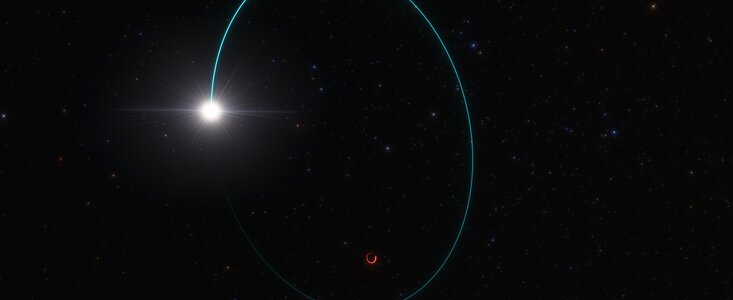Most massive stellar black hole in our galaxy found
16 April 2024

Astronomers have identified the most massive stellar black hole yet discovered in the Milky Way galaxy. This black hole was spotted in data from the European Space Agency’s Gaia mission because it imposes an odd ‘wobbling’ motion on the companion star orbiting it. Data from the European Southern Observatory’s Very Large Telescope (ESO’s VLT) and other ground-based observatories were used to verify the mass of the black hole, putting it at an impressive 33 times that of the Sun.
Stellar black holes are formed from the collapse of massive stars and the ones previously identified in the Milky Way are on average about 10 times as massive as the Sun. Even the next most massive stellar black hole known in our galaxy, Cygnus X-1, only reaches 21 solar masses, making this new 33-solar-mass observation exceptional [1].
Remarkably, this black hole is also extremely close to us — at a mere 2000 light-years away in the constellation Aquila, it is the second-closest known black hole to Earth. Dubbed Gaia BH3 or BH3 for short, it was found while the team were reviewing Gaia observations in preparation for an upcoming data release. “No one was expecting to find a high-mass black hole lurking nearby, undetected so far,” says Gaia collaboration member Pasquale Panuzzo, an astronomer from the National Centre for Scientific Research (CNRS) at the Observatoire de Paris - PSL, France.
"This is the kind of discovery you make once in your research life."
To confirm their discovery, the Gaia collaboration used data from ground-based observatories, including from the Ultraviolet and Visual Echelle Spectrograph (UVES) instrument on ESO’s VLT, located in Chile’s Atacama Desert [2]. These observations revealed key properties of the companion star, which, together with Gaia data, allowed astronomers to precisely measure the mass of BH3.
More:
https://www.eso.org/public/news/eso2408/
